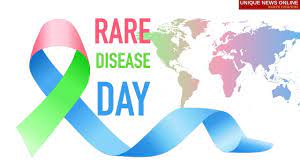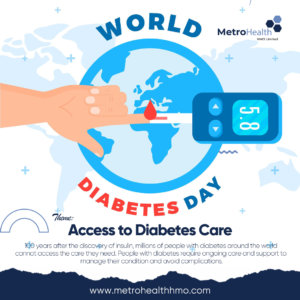World Down Syndrome Day (WDSD) is celebrated annually on the 21st of March and global awareness has been observed by the United Nations since 2012. This date was selected to signify the uniqueness of the triplication (trisomy) of the 21st chromosome which causes Down syndrome.
This year’s theme “We CONNECT So That We Can” demonstrates that nothing is as important as humans connecting with each other. People with Down Syndrome must not be left alone in this era of Covid 19. The basic purpose of WDSD is to increase awareness about this disorder and to stand with those people with Down Syndrome.
Understanding Down Syndrome
According to the Center for Disease Control and Prevention 2021, Down Syndrome is a condition in which a person has an extra chromosome. Chromosomes are small “packages” of genes in the body. They determine how a baby’s body forms and functions as it grows during pregnancy and after birth. Typically, a baby is born with 46 chromosomes, babies with Down syndrome have an extra copy of one of these chromosomes: chromosome 21. This extra copy of a chromosome is medically called ‘trisomy’. Down syndrome is also referred to as Trisomy 21, this extra copy changes how the baby’s body and brain develop, which can cause both mental and physical challenges for the baby.
Facts About Down Syndrome you should know;
An article published by DoSomething.org in 2021 highlighted the following facts about down syndrome:
- Down syndrome is caused by a genetic condition where an extra copy of the 21st chromosome in a new-born baby is found.
- The exact cause of this disorder is still unknown.
- The total number of people in the world with Down Syndrome is approximately 5.4 million while 27000 deaths have been recorded so far.
- The total life expectancy of people with Down Syndrome was 25 years in 1981 but today it has raised to about 60 years.
- Children and adults with Down Syndrome may have some common features but naturally, the individuals resemble their close family members
- It is now a liability of schools to provide proper education to children with Down Syndrome.
- Chances of giving birth to a child having Down Syndrome increase with the increase in maternal age however 80% of the babies are born to women under 35 years because this age group has a greater tendency to give birth.
- An interesting thing about Down Syndrome Persons is that they frequently become able to hold jobs, live independently, and enjoy other activities but the average varies from individual to individual based upon their mental and physical behaviour.
Causes / Risk Factors of Down Syndrome
It was published by the National Institute of Health 2021, that the causes/risk factors for down syndrome include:
- The extra chromosome 21: All cells in the body contain genes, which have a specific code or set of instructions for creating the cells. These genes sit inside chromosomes in the cell nucleus. There are typically 46 chromosomes in each cell — 23 inherited from the mother and 23 from the father. Down syndrome occurs when some or all a person’s cells have an extra full or partial copy of chromosome 21.
- Advancing maternal age: A woman’s chances of giving birth to a child with Down syndrome increase with age because older eggs have a greater risk of improper chromosome division. A woman’s risk of conceiving a child with Down syndrome increases after 35 years of age. However, most children with Down syndrome are born to women under age 35 because younger women have far more babies. A pregnant person at age 25 has about a 1 in 1,250 chance of conceiving a child with Down syndrome. At age 40, the incidence becomes approximately 1 in 100.
- Being carriers of the genetic translocation for Down syndrome. Both men and women can pass the genetic translocation for Down syndrome on to their children.
- Having had one child with Down syndrome. Parents who have one child with Down syndrome and parents who have a translocation themselves are at an increased risk of having another child with Down syndrome. A genetic counselor can help parents assess the risk of having a second child with Down syndrome.
Symptoms of Down Syndrome
Although people with Down syndrome might act and look similar, each person has different abilities. According to the centres for disease control and prevention 2021, People with Down syndrome usually have an IQ (a measure of intelligence) in the mildly-to-moderately low range and are slower to speak than other children.
Common Physical / Developmental Features Of Down Syndrome include:
- A flattened face, especially the bridge of the nose
- Almond-shaped eyes that slant up
- A short neck
- Small ears
- A tongue that tends to stick out of the mouth
- Tiny white spots on the iris (coloured part) of the eye
- Small hands and feet
- A single line across the palm of the hand (palmar crease)
- Small pinky fingers that sometimes curve toward the thumb
- Poor muscle tone or loose joints
- Shorter in height as children and adults
- Impulsive behaviour
- Poor judgment
- Short attention span
- Slow learning capabilities
Types of Down Syndrome
There are three types of Down syndrome. People often can’t tell the difference between each type without looking at the chromosomes because the physical features and behaviours are similar.
- Trisomy 21: About 95% of people with Down syndrome have Trisomy 21. With this type of Down syndrome, each cell in the body has 3 separate copies of chromosome 21 instead of the usual 2 copies.
- Translocation Down syndrome: This type accounts for a small percentage of people with Down syndrome (about 3%). This occurs when an extra part or a whole extra chromosome 21 is present, but it is attached or “trans-located” to a different chromosome rather than being a separate chromosome 21.
- Mosaic Down syndrome: This type affects about 2% of people with Down syndrome. Mosaic means mixture or combination. For children with mosaic Down syndrome, some of their cells have 3 copies of chromosome 21, but other cells have the typical two copies of chromosome 21. Children with mosaic Down syndrome may have the same features as other children with Down syndrome. However, they may have fewer features of the condition due to the presence of some (or many) cells with a typical number of chromosomes.
Prevention of Down Syndrome
There’s no way to prevent Down syndrome. If you’re at high risk of having a child with Down syndrome or you already have one child with Down syndrome, you may want to consult a genetic counselor before becoming pregnant. A genetic counselor can help you understand your chances of having a child with Down syndrome. He or she can also explain the prenatal tests that are available and help explain the pros and cons of testing.
However, the following can be done:
- Avoid late reproduction
- Pre-implantation genetic diagnosis
- Folic acid supplementation
ConclusionEarly intervention programs can be very instrumental in helping children with Down syndrome to reach their full potential. There is no single, standard treatment for Down syndrome, treatments are based on an individual’s physical and intellectual needs as well as his or her personal strengths and limitations because People with Down syndrome are at a greater risk for several health problems. Early intervention can be coupled with educational / treatment therapy (Physical therapy, Speech-language therapy, Occupational therapy, Emotional and behavioral therapies) and the use of assistive devices. People with Down syndrome can receive proper care while living at home and in the community, ensure you work with your health care team to evaluate possible therapies and make wise decisions based on the best that we know about the condition.









